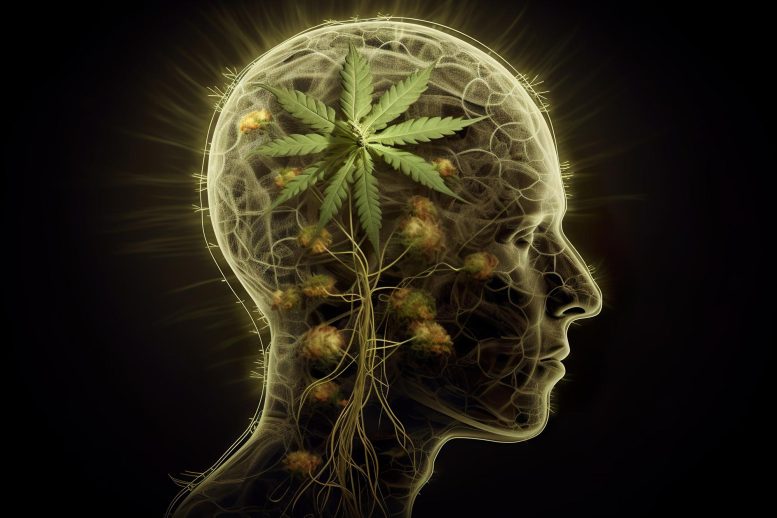
A study from the University of Michigan indicates a rise in cannabis use among older Americans, with 12% reporting THC use in the past year and 4% using it multiple times a week. This increase is especially pronounced in individuals with risky alcohol consumption habits. The study, which analyzed data from a national poll, underscores the need for enhanced screening and education about the risks of cannabis, particularly among vulnerable older adults.
New study reveals higher cannabis use among people over 50 since the pandemic and state-level legalization, particularly notable in individuals with risky alcohol consumption levels.
The use of cannabis among older Americans has increased since the pandemic. A recent study focusing on individuals aged 50 to 80 reveals that 12% have used a THC-containing product in the last year, with 4% using it several times a week. Notably, those who consume alcohol at levels considered risky show a significantly higher rate of cannabis usage.
The new findings, published in the journal Cannabis and Cannabinoids Research by a team from the University of Michigan’s Institute for Healthcare Policy and Innovation, suggest a need for more education and screening of older adults for cannabis-related risks.
“As the stress of the pandemic and the increased legalization of cannabis by states converged, our findings suggest cannabis use increased among older adults nationally. Older adults represent a vulnerable age group for cannabis use due to interactions with medications, risky driving, cannabis-related mental health impacts, and increased possibility of falls and memory issues,” said Anne Fernandez, Ph.D., an addiction psychologist in the U-M Addiction Center and Department of Psychiatry who led the study.
Data Sources and Comparative Analysis
The data in the study come from the National Poll on Healthy Aging, which IHPI runs with funding from AARP and Michigan Medicine, U-M’s academic medical center. The national poll of 2,023 older adults was taken in January 2021, nine months into the official pandemic declaration and just as the first COVID-19 vaccines were being made available to the groups at the highest risk.
The 12% overall past-year use of cannabis seen in the new study is higher than the 9.5% seen in 2019 by other researchers pre-pandemic, and far higher than the 3% seen in another study in 2006 when only 12 states had passed medical cannabis laws. The NPHA in 2017 found that 6% of older adults had used cannabis for medical purposes.
In the new study, in addition to the 4% who said they use cannabis products four or more times a week, another 5% said they use cannabis once a month or less. The poll question asked about use of any product containing THC, the main psychoactive component of cannabis — including edibles – and used multiple common names for cannabis. It did not differentiate between medical and recreational use of cannabis.
Demographics and Dual-Substance Use
Older adults who said they were unemployed, those who said they were unmarried and had no partner, and those who said they drank alcohol were more likely to say they used cannabis.
Fernandez notes an especially concerning finding: those whose alcohol use was high enough to cause physical and psychological harm were nearly eight times as likely to say they had used cannabis in the past year. But even those with low-risk alcohol drinking patterns were more than twice as likely to say they had used cannabis in the past year.
This group of dual-substance users is one that doctors and public health officials should pay special attention to, she said.
“Other research has shown that using both alcohol and cannabis increases the chance that a person will drive while impaired,” she explained. “They are also more likely to have physical and mental health issues, including substance use disorders. Screening for alcohol use, cannabis use, and other drug use could help more people get counseling and reduce their risk and risk to others.”
Ethnicity and Health Care Recommendations
While there were no statistical differences among older adults by age, health or mental health status, income, or education, those who said they had Hispanic backgrounds were less likely than non-Hispanic older adults to say they used cannabis. Fernandez says this is consistent with other research showing lower cannabis use in the Latino community.
She advises any older adult who chooses to use cannabis products for any reason to be open with their healthcare provider about it, especially if they also drink alcohol or take certain medications. Physicians, nurse practitioners, and pharmacists can advise if any medications a person is taking might interact with cannabis, including ones for insomnia, depression, and anxiety, opioid-containing pain medications, seizure medications, and blood thinners.
Reference: “Prevalence and Frequency of Cannabis Use Among Adults Ages 50–80 in the United States” by Anne C. Fernandez, Lara Coughlin, Erica S. Solway, Dianne C. Singer, Jeffrey T. Kullgren, Matthias Kirch and Preeti N. Malani, 20 November 2023, Cannabis and Cannabinoid Research.
DOI: 10.1089/can.2023.0056
For more about the poll methodology, see https://www.healthyagingpoll.org/survey-methods
In addition to Fernandez, the study’s authors are U-M addiction psychologist Lara Coughlin, Ph.D., poll deputy director Erica S. Solway, Ph.D., poll manager Dianne C. Singer, poll director Jeffrey T. Kullgren, M.D., M.S., M.P.H., poll data lead Matthias Kirch, M.S. and Preeti N. Malani, M.D., former poll director and current poll senior advisor.
In addition to the poll funding, Fernandez has research funding from the National Institute of Alcohol Abuse and Alcoholism (AA023869).









Terrifying! Americans over fifty, 12% had cannabis maybe once in the last year! Most concerning, the ones who drink “enough to cause physical and psychological harm were nearly eight times as likely to say they had used cannabis” when they otherwise could just safely be alcoholics! They’re at risk of having less pain, moderate blood pressure, fewer seizures, less glaucoma, reduced alcoholism, fewer tremors and muscle spasms, and less inflammation. They must be stopped! Get them “Screening for…cannabis use (to) help more people get counseling and reduce their risk and risk to others”!
I would pay the $51 for access to the study, to look for a citation on the “increased possibility of falls and memory issues”, and for funding conflicts of interest, but I’m not going to. I’ll believe patients need screening for “interactions with medications”, because I’m often helping weed out medications like duplicated blood-thinners or tripled antihypertensives causing family and friends to fall. The NIAAA, which the article says funded the study, is a branch of the NIH, for anyone keeping tabs on the American government’s War on Drugs.
Stop using natural and herbal methods to treat things!
BUY OUR DRUGS!!!!!!
No thanks. 40+ years of dealing with “health care” and pharmaceuticals is more than enough for me to make an informed decision on cannabis use.
I’ve been happier, healthier, improved mood, and sleep better since replacing pills with cannabis.
As a long-term victim of the pharmaceutical industry and the detrimental products that doctors gave me as a child that screwed me up for 40++++ years, and the war on drugs that the weapons manufacturers “manufactured” at the end of the Vietnam War so they could throw war protesters in jail, I see right through this b.s.
When I found the magic green herb, my OVERALL health improved greatly.
I understand statistics, Especially concerning social behaviors, can sometimes conflict with one’s observations due to variations in the overall environment. It is rather disconcerting when one’s observations yield a completely inverted reality to the presented statistical construction. My conclusion is that the authors of this article have nefarious motives. I smell the corruption of a wannabe authoritarian bureaucracy posing as technocrats.